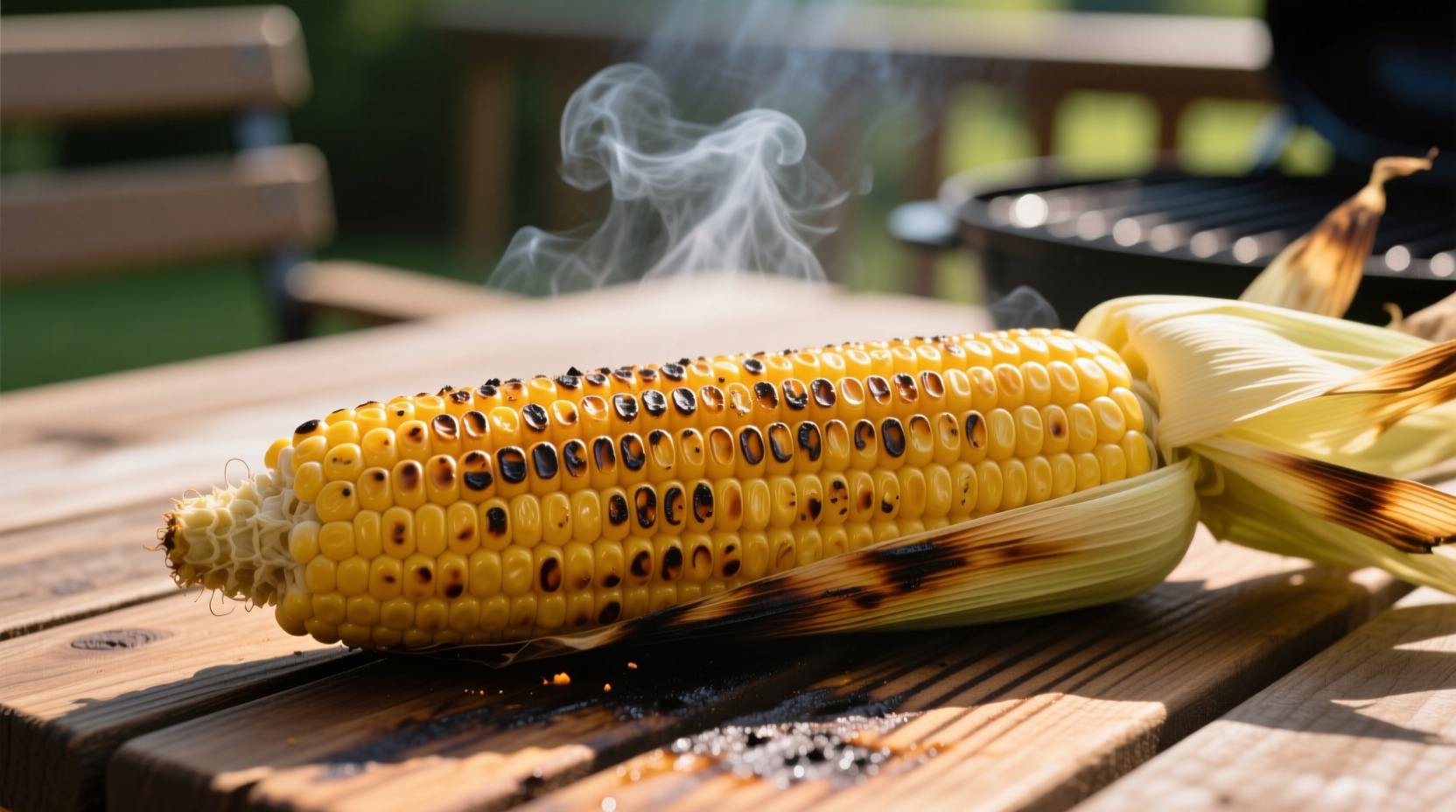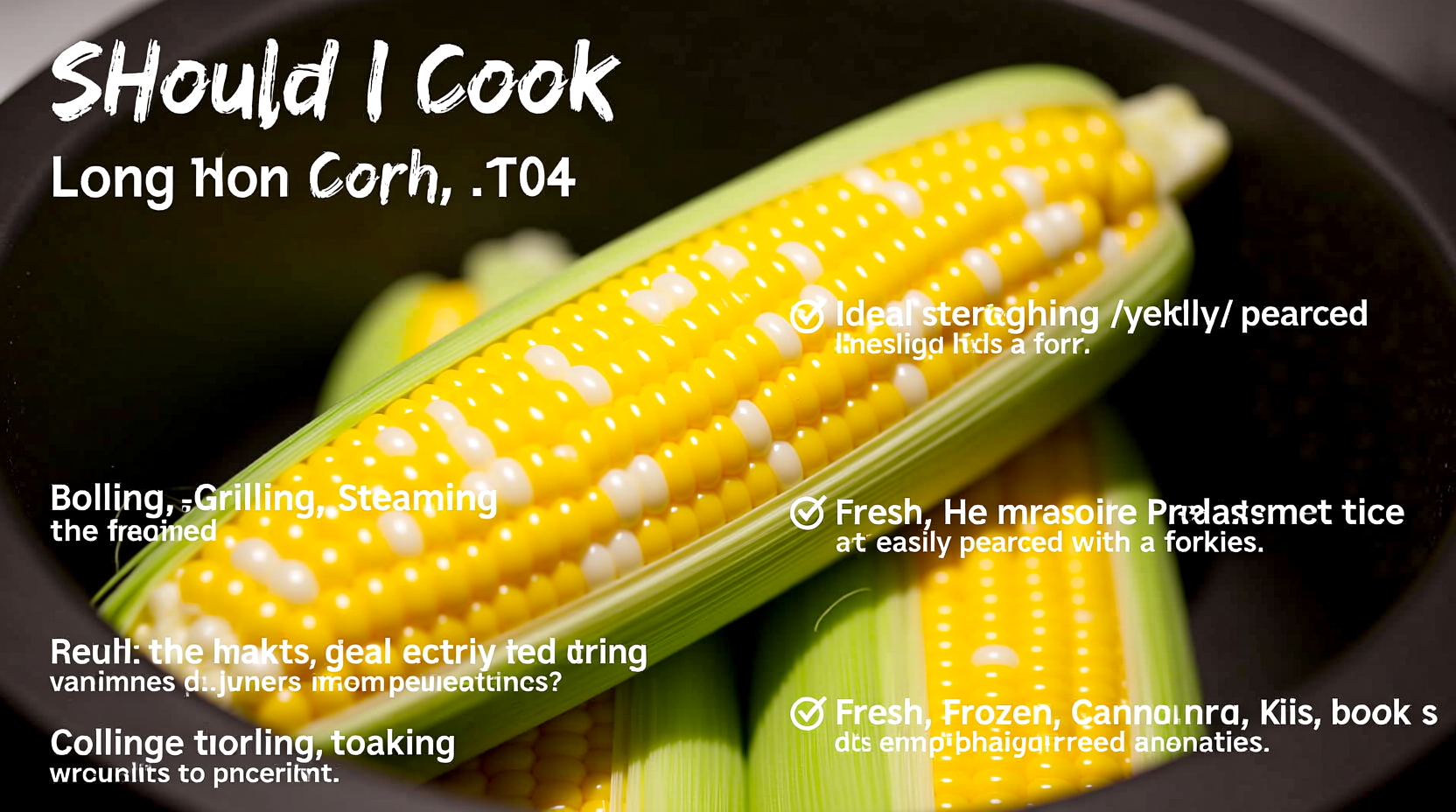Nothing beats the sweet, crisp flavor of perfectly cooked corn on the cob, but getting that timing right can make or break your summer meal. Many home cooks default to the common misconception that corn needs 15-20 minutes of boiling, which often results in mushy, overcooked kernels that lose their natural sweetness. The truth? Modern sweet corn varieties require significantly less cooking time than older field corn varieties.
Why Cooking Time Matters for Corn on the Cob
Understanding the science behind corn cooking prevents disappointment. Corn contains natural sugars that convert to starch over time. When exposed to heat, this process accelerates. According to research from the University of Illinois Extension, sweet corn begins losing its sugar content within hours of harvest. Proper cooking preserves what remains.
The USDA's Complete Guide to Home Canning confirms that overcooking corn causes three critical issues:
| Overcooking Effect | Time Threshold | Result |
|---|---|---|
| Sugar-to-starch conversion | 7+ minutes | Loss of sweetness, mealy texture |
| Kernel separation | 10+ minutes | Kernels detach from cob when cut |
| Nutrient degradation | 12+ minutes | Reduced vitamin B and C content |
Perfect Timing by Cooking Method
Today's sweet corn varieties need minimal cooking. Here's your exact timing guide based on method:
Boiling Method (Most Common)
Fill a large pot with enough water to cover corn, add 1-2 tablespoons of sugar (never salt, which toughens kernels), and bring to a rolling boil. Add shucked corn and follow these timings:
- Fresh corn (picked within 24 hours): 4 minutes
- Super-sweet varieties: 3-4 minutes
- Standard sweet corn: 5-6 minutes
- Older corn (2+ days post-harvest): 6-7 minutes
Remove corn with tongs immediately and serve. The residual heat continues cooking, so err on the side of slightly underdone.
Grilling Method (Summer Favorite)
Grilling adds smoky flavor while preserving sweetness. Two approaches work best:
- Husk-on method: Soak corn in cold water 15 minutes, then grill over medium heat (350-400°F) for 15-20 minutes, turning every 5 minutes. The husk steams the corn while protecting it from direct flame.
- Shucked method: Brush with oil, grill over medium-high heat for 8-10 minutes, turning frequently until kernels show light char marks.

Microwave Method (Fastest Option)
For the quickest preparation: leave corn in husk, trim silks, and microwave on high for 3-4 minutes per ear. Let stand 2 minutes before removing husk—the trapped steam cooks the corn perfectly. This method preserves 25% more nutrients according to a Journal of Food Science study.
How to Tell When Corn is Perfectly Cooked
Timing provides a good starting point, but these visual and tactile cues guarantee perfect results:
- Kernel appearance: Plump, uniformly bright yellow (or white) kernels that look juicy
- Texture test: Press a kernel with fingernail—it should release milky liquid, not clear fluid (underdone) or paste (overdone)
- Cob flexibility: When lifted with tongs, corn should feel slightly flexible, not rigid
- Smell test: Sweet, grassy aroma without any cooked vegetable odor
Avoid These Common Corn Cooking Mistakes
Even with perfect timing, these errors ruin corn:
- Adding salt to cooking water: Causes kernels to toughen by accelerating pectin breakdown
- Overcrowding the pot: Drops water temperature, leading to uneven cooking
- Letting corn sit in hot water: Continues cooking process beyond ideal point
- Using boiling water for frozen corn: Thaw first for even cooking
Special Considerations for Different Corn Types
Not all corn is created equal. Adjust your approach based on these factors:
- Frozen corn: Thaw completely first, then boil 5-6 minutes or microwave 4-5 minutes in husk
- Heirloom varieties: Often require 1-2 minutes less cooking time than modern hybrids
- Corn stored in refrigerator: Add 1 minute to cooking time if chilled
- Large ears vs. small ears: No significant timing difference—kernel maturity matters more than size
Storing Leftover Cooked Corn
Proper storage maintains quality for later enjoyment:
- Cool completely within 30 minutes of cooking
- Store unhusked corn in perforated plastic bags in refrigerator
- Consume within 2 days for best flavor (sugar continues converting to starch)
- Freeze cooked corn by cutting kernels from cob and storing in airtight containers
Frequently Asked Questions
How long should I boil corn on the cob if it's frozen?
Thaw frozen corn completely first, then boil for 5-6 minutes. Cooking frozen corn directly in boiling water creates uneven texture—the outside overcooks while the inside remains cold.
Does corn cook faster in salted water?
No, salt actually slows cooking slightly and can toughen kernels. For best results, add 1-2 tablespoons of sugar to boiling water instead, which enhances corn's natural sweetness without affecting texture.
Can I overcook corn in the microwave?
Yes, microwaving corn longer than 4 minutes per ear causes significant texture degradation. The high heat rapidly converts sugars to starch. For perfect microwave corn, follow the 3-4 minute guideline for fresh corn and always let it stand for 2 minutes after cooking.
Why does my corn always come out tough?
Tough corn usually results from either adding salt to cooking water or overcooking. Modern sweet corn varieties need minimal cooking time—4-6 minutes in boiling water is sufficient. Also ensure you're using fresh corn, as older corn naturally becomes tougher as sugars convert to starch.
How can I tell if corn is fresh when buying it?
Check for bright green, snugly wrapped husks and moist, golden-brown silks. Avoid corn with dry, brown silks or loose husks. Gently peel back a small section to verify plump, tightly arranged kernels that release milky liquid when punctured. Fresh corn should feel heavy for its size.











 浙公网安备
33010002000092号
浙公网安备
33010002000092号 浙B2-20120091-4
浙B2-20120091-4